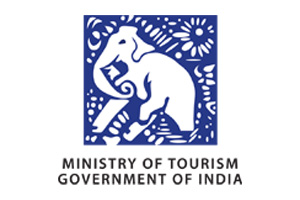Frequently Asked Questions
The organisation of an overseas vacation is not a simple undertaking and needs a significant amount of back and forth travel. You are going to have a lot of questions and ideas, and because of this, we have a specific section of our website devoted to frequently asked questions (FAQ). The following are some of the questions that are asked the most commonly about tiger safaris in India. We have made an effort to respond to them in the most in-depth manner feasible. However, if you want to ask a topic that is not included under, feel free to write to us at [email protected]. We will be happy to answer any questions you may have. Our staff will respond to your inquiry within the next twenty-four hours!
In addition to India, there are seven more nations in which wild tigers are still found. However, India, which has a total population of 2,967 tigers, is home to around 75 percent of the world’s wild tigers and is home to 50 tiger sanctuaries. The sheer volume of tigers that can be found in India raises the likelihood of spotting one by a significant margin. You have a high probability of seeing tigers in at least 15 of the tiger reserves, which is the total number of tiger reserves.
The top 3 national parks for tiger safari in India are Corbett National Park, Bandhavgarh National Park and Ranthambore National Park.
During your journey to India for a tiger safari, it is quite safe for you to remain inside the national park. However, you should be informed that leaving your room after dark in order to wander freely outside the hotel is against the rules. There is a possibility that you will come into contact with harmful wildlife of any kind. These regulations are adhered to more strictly if you are staying in a rest house, such as the Dhikala Forest Rest House in Corbett National Park, as opposed to lodges that are situated further away from the primary boundary of the forest.
The average cost of a tiger safari in India is determined in large part by the parks that are visited, the number of days that are spent on the trip, the number of people that are going on the trip, the type of lodging that is chosen (three or four or five stars), whether exclusive or shared jeep safaris are chosen, and a number of other factors.
Sunrise and sunset times change throughout the year in India, which means that the park hours for tiger safaris must adapt accordingly. During the months of summer, the morning safari typically begins at 6 a.m. and lasts for four to five hours. The afternoon safari often begins about 3.30 p.m. and lasts for approximately three hours. During the winter months, the morning safari begins at approximately 6.45 am and lasts for approximately 4-5 hours. The afternoon safari begins at approximately 2.30 pm and lasts for approximately 3 hours.
Surely. We are always interested in hearing comments from our guests so that we may either make our services even better or take note of the things that we have been doing well. You may read the same thing on our TripAdvisor website for our Tiger Safari in India. On our website, you may also find a page with testimonials from satisfied customers.
Between 7-8 hours on game drive split between, morning and afternoon drives.
We advise you to bring all of your personal medications with you at all times and not to rely on the assistance of any local pharmacies. The nearest medical aid may be more than an hour distant, and that’s just for treating basic diseases. The national parks are around four to five hours’ drive from any good hospitals.
The chances are approximately equal. There is no way to know with absolute certainty what this number is. During a single tiger safari in India, our visitors can occasionally even see two or three tigers at the same time. It takes a lot of talent, patience, and a little bit of luck to go on a safari in search of tigers.
There is a significant range in temperature during the day in Indian forests. During the hottest summer months, like April and May, the temperature can reach a high of 45 degrees Celsius, but by evening, it can dip down to a more comfortable 25 degrees Celsius. In the mornings throughout the winter months of December through February, the temperature can get as low as 0-5 degrees, but by the time the sun comes up, it has warmed up to a comfortable 15-20 degrees. You can learn more about it if you click here.
It is possible to see tigers on tiger safari in India at any time of the year; however, the months of October through March, when temperatures are typically lower, are the best time to schedule a safari tour. There are designated tiger safari areas in each and every national park in India, and these areas are open to the general public for an extended period of time. It is essential to schedule your tiger safaris in India at least five months in advance. This will ensure that top tiger tour operators, such as Tiger Safari India, have sufficient time to organise the ideal vacation for you.
A tiger safari in an Indian national park is best experienced in the most manoeuvrable form possible, which is an open-roofed car known as a jeep. While on safari, it has enough room for six passengers in addition to a naturalist (who will also serve as your driver) and a guide (who will be given by the forest department). A canter, on the other hand, is a kind of open-topped small bus that can carry anywhere from 16 to 20 passengers in addition to the driver and the tour guide.
The most vital thing that a person needs have in order to visit a national park is a valid safari permit that includes their full name and the necessary details from their government ID. For purposes of verification at the park entrance, the individual in question should even have the same form of identification as is listed on the safari permit. Other necessities to bring on safari are antibacterial hand sanitizer, a pre-packaged water bottle, a packed breakfast for the morning safari, a camera bean bag, a safari hat, mosquito repellent cream or spray, and sunscreen lotion.








